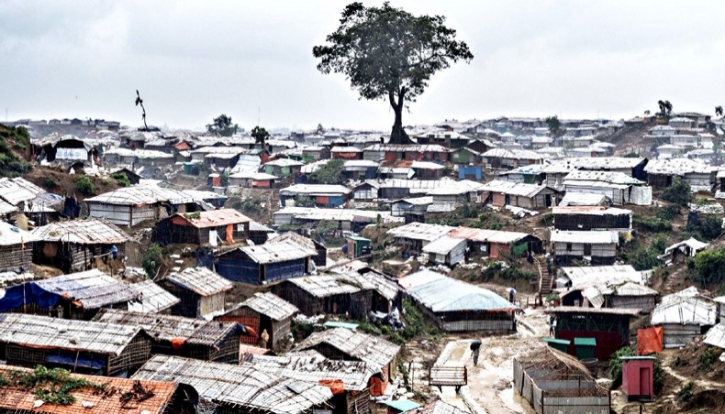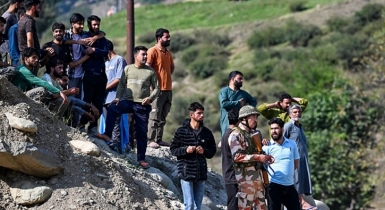
THE World Food Programme has recently announced that it would reduce the food supplies for the Rohingyas sheltered in Bangladesh camps by 17 per cent beginning on March 1, bringing the cost down from $12 to $10 a person (Tk 1,224–1,070) because of fund constraints. This is expected to make the already difficult situation of the Rohingyas even more difficult. UN special rapporteurs Michael Fakhri and Thomas Andrews have called this decision to be ‘unconscionable’ to the Rohingya community, especially with Ramadan around the corner, as almost all of them are Muslims.
Since 2017, there have been almost a million Rohingyas living in 34 camps located in Cox’s Bazar. Of them, more than a half are women, girls and children. The repatriation of the Rohingyas to their homes in Rakhine has been inordinately delayed by Myanmar which has only served to lengthen their statelessness. The past five years spent in camps have had a severe impact on the population, particularly on children.
The World Food Programme reports that 40 per cent of the Rohingya children suffer from stunted growth and 12 per cent of them have acute malnutrition. In addition, 28 per cent of newborns are underweight in Kutupalong hospital and Balukhali clinic where mothers also suffer from acute malnutrition and anaemia. Together with pregnant and breastfeeding mothers, the children are likely be the worst victims of the food cut. In addition to increased domestic abuse, underage marriage, child labour, trafficking in humans, drug trafficking and violence in the camps, this budget cut will result in an increase in the number of people trying to leave the camps by boat, an escape route proved deadly in past years.
Since 2015, more than 3,500 Rohingyas have travelled by boat through the Andaman Sea to Malaysia, Indonesia and other Southeast Asian nations, either to flee the unrest in Myanmar or because of the deteriorating conditions of camps in Bangladesh. A number of them never made it to shore. In December 2022, a boat carrying 180 Rohingya refugees disappeared in the sea and it is assumed that they are all dead. Despite being aware of the risks involved, refugees take such trips because life in camps is inhumanly cruel. The $12 voucher does not meet their hunger. Their main source of income is the meager money they receive from local non-governmental organisations which is insufficient for them to lead a decent life. Hence, they have to survive on basic food items such as rice and lentils and now that the voucher has been reduced, a healthy meal will become a mere dream.
The funding for the Rohingya population has been gradually declining since Covid 19 hit the economy of donor countries in 2020. The Joint Response Plan of 2019 by UN agencies and Bangladesh raised $636.7 million out of the $920.5 million required for the refugee programmes. In 2022, the plan saw a drastic reduction when less than a half of the required budget of $881 million was delivered by donors. The ongoing Russia-Ukraine war and the consequent humanitarian crisis prompted the world community to raise $1.5 billion and it has also contributed to the fund crunch for the Rohungyas.
The disparity in support for the victims in these nations demonstrates how the Rohingya crisis is losing the global attention. In regards to this demonstrated disparity of global attention, Tom Andrews, the UN special rapporteur on the situation of human rights in Myanmar, noted that the Rohingyas are receiving rhetorical support from many UN members but ‘Rohingya families cannot eat political rhetoric.’
In the context of Bangladesh’s economic crisis, it is essential to comprehend far-reaching consequences of the declining funds. The cost of living is increasing and purchasing power is decreasing because of the growing inflation, a direct consequence of the fuel crisis caused by the Russia-Ukraine war. It has already cost Bangladesh’s modest economy more than $100 million to construct fences around the refugee camps and prepare Bhasan Char to move a part of the refugee population.
According to the Centre for Policy Dialogue, this amount will continue to rise as Bangladesh may need to spend about $1.22 billion annually on the Rohingyas, which is nearly impossible for the country given that it has recently taken out a $4.7 billion loan from the International Monetary Fund for its balance of payment. If the Joint Response Plan 2023, which will request $876 million from donors for the Rohingya people, obtains the same level of waning enthusiasm, the vulnerable refugee population and the host nation could be exposed to an unprecedented disaster.
Sadia Aktar Korobi is a student of peace and conflict studies in Dhaka.





































